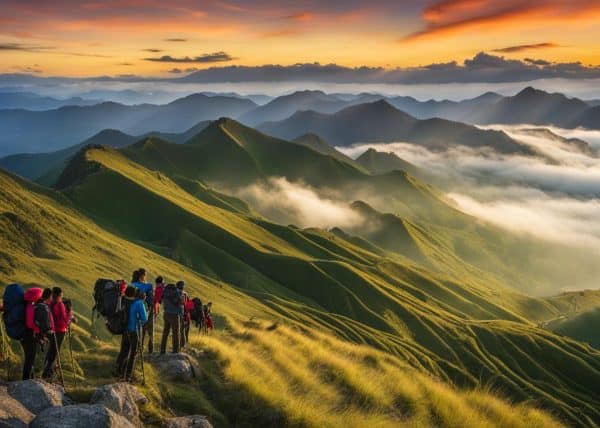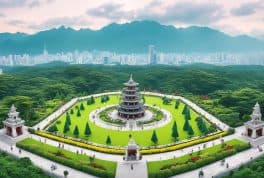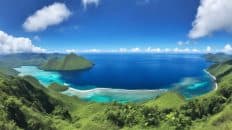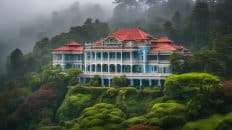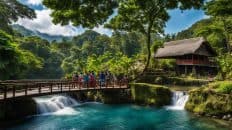Luzon Tourist Spot
Luzon, the Philippines' largest island, is a mosaic of stunning tourist spots. It boasts the awe-inspiring Banaue Rice Terraces, the perfectly conical Mayon Volcano, and the historic charm of Vigan and Intramuros. With its pristine beaches like those in La Union and Batangas, and a rich tapestry of cultural festivals and traditions, Luzon offers a diverse and captivating experience, seamlessly blending natural beauty with historical and cultural richness.
Top 10 Questions and Answers about Luzon Tourist Spots
What are the most popular tourist spots in Luzon?
Can you visit the Banaue Rice Terraces easily?
Is it worth visiting the Mayon Volcano?
What are some must-visit beaches in Luzon?
What makes Vigan a unique destination in Luzon?
Are there good opportunities for hiking in Luzon?
What cultural experiences can one expect in Luzon?
Is Luzon suitable for family vacations?
What are some lesser-known but worthwhile tourist spots in Luzon?
How safe is it to travel in Luzon for tourists?
Guides and Tours

Top 10 Luzon Tourist Spots to Visit
- Banaue Rice Terraces: Often referred to as the "Eighth Wonder of the World," these terraces are a marvel of ancient engineering and agricultural practices, offering breathtaking views in the Cordillera region.
- Mayon Volcano: Known for its almost perfect cone shape, Mayon Volcano in Albay is a favorite among nature enthusiasts and photographers for its majestic and symmetrical appearance.
- Intramuros: The historic walled city in Manila is rich in Spanish colonial history, featuring ancient walls, forts, and churches, including the iconic San Agustin Church.
- Vigan: This UNESCO World Heritage Site in Ilocos Sur is famous for its well-preserved Spanish colonial and Asian architecture, cobblestone streets, and unique cultural heritage.
- Taal Volcano and Lake: Located in Batangas, this active volcano within a lake offers a picturesque and unique natural setting and is popular for trekking and sightseeing.
- Hundred Islands National Park: Situated in Pangasinan, this natural park features over a hundred islands and islets, perfect for island hopping, snorkeling, and enjoying the scenic landscapes.
- La Union: Known as the Surfing Capital of the North, La Union offers beautiful beaches perfect for surfing, relaxation, and beach activities.
- Baguio City: The Summer Capital of the Philippines, known for its cool climate, beautiful parks like Burnham Park, and vibrant cultural scene including the Panagbenga Festival.
- Sagada: Famous for its unique hanging coffins, this mountainous area in the Cordillera region also offers beautiful views, cave exploration, and a serene environment.
- Pagsanjan Falls (Cavinti Falls): Located in Laguna, this famous waterfall is a favorite for its dramatic cascade, and the thrilling boat ride through the Pagsanjan Gorge to reach it.

Why you should visit Luzon Tourist Spots
The Natural Wonders of Luzon: A Majestic Display of Landscapes
Luzon, the largest island in the Philippines, is a mosaic of natural beauty. From the iconic, perfectly cone-shaped Mayon Volcano to the majestic Banaue Rice Terraces, each Luzon tourist spot offers a unique and unforgettable experience. The island's diverse landscapes range from the rolling hills of Batanes to the pristine beaches of La Union, presenting a paradise for nature lovers and adventure seekers. Whether it's trekking the trails of Mount Pulag to witness the sea of clouds or surfing the waves in Baler, Luzon's natural wonders are not just visually stunning but also offer a wealth of activities.
Cultural Immersion: A Journey Through Time and Traditions
Luzon is not just about picturesque landscapes; it's a cultural treasure trove. The historic city of Vigan, with its well-preserved Spanish colonial architecture, offers a glimpse into the past, while the vibrant festivals and indigenous practices in the Cordillera region showcase the rich cultural tapestry of the island. Each Luzon tourist spot tells a story of the island's diverse heritage, from the Spanish-era churches in Manila to the unique hanging coffins in Sagada. A visit to Luzon is a cultural immersion, offering insights into the traditions, arts, and way of life of the Filipino people.
Historical Richness: The Chronicles of Luzon
The historical significance of Luzon cannot be overstated. Intramuros, the walled city in Manila, speaks volumes about the Philippines' colonial history. The remnants of World War II in Corregidor Island, the historical markers in Rizal Park, and the ancient churches scattered across the island are testaments to Luzon's rich history. Each historical Luzon tourist spot offers a lesson in the resilience and struggles of the Filipino people, making Luzon not just a place to visit but to learn and reflect.
Modern Charms Amidst Traditional Settings
Luzon seamlessly blends the traditional with the modern. The bustling streets of Makati and the colorful nightlife of Manila provide a contemporary contrast to the island's historical and natural sites. Shopping malls, modern amenities, and a vibrant culinary scene in Luzon's urban centers cater to the tastes of modern travelers, making Luzon a well-rounded tourist spot.
Adventure Awaits in Every Corner
For those seeking adventure, Luzon is a playground. The varied terrain offers everything from hiking, mountain biking, and zip-lining in the mountains to diving, kayaking, and island hopping in the coastal areas. Each Luzon tourist spot presents an opportunity for thrill and excitement, making it an ideal destination for adventure enthusiasts.
Luzon – A Microcosm of the Philippines' Splendor
Luzon is more than just a destination; it's an experience that captures the essence of the Philippines. The island's diverse landscapes, rich cultural heritage, historical depth, modern vibrancy, and adventurous offerings make it a compelling destination for any traveler. A visit to Luzon is not just a journey through a place but a journey through history, culture, nature, and adventure. It's a destination that stays with you long after you've left, beckoning you to return and explore more.

Luzon Tourist Spot Facts
1.Introduction to Luzon as a Premier Tourist Destination
Luzon, the largest island in the Philippines, stands as a beacon of cultural diversity, natural beauty, and historical richness. This northernmost region, pulsating with life and color, offers an array of experiences for every traveler. From the majestic peaks of its mountain ranges to the azure waters of its surrounding seas, Luzon tourist spots weave a tapestry of unforgettable landscapes and cultural narratives. This extensive exploration into Luzon's wonders aims to unveil the island's most compelling attractions, making it a quintessential destination for those seeking adventure, relaxation, and cultural immersion.
As you step into Luzon, you are greeted by a world where modernity and tradition coexist. The island’s unique position in the archipelago has gifted it with a rich heritage, evident in its diverse cultural landscapes and historical landmarks. Luzon, as a popular tourist destination, has consistently drawn visitors from all corners of the globe, eager to experience its unique blend of natural wonders and cultural vibrancy.
The Essence of Luzon's Tourist Spots
Luzon tourist spots are a testament to the island’s multifaceted personality. Every city, town, and village offers a distinct flavor, contributing to Luzon's reputation as a melting pot of experiences. The region is a kaleidoscope of tourist attractions, ranging from the historic streets of Vigan to the pristine beaches along its vast coastline. Each site tells a story, a piece of a larger narrative that encompasses centuries of history, rich culture here, and natural evolution.
One cannot speak of Luzon without mentioning its UNESCO World Heritage Sites. The Banaue Rice Terraces, often referred to as the "Eighth Wonder of the World," are a most breathtaking scenery and impressive sight. These rice terraces, carved into the mountains of Ifugao by the ancestors of the indigenous people, are a magnificent example of a living cultural landscape. The Batad Rice Terraces, in particular, are notable for their amphitheater-like structure, drawing tourists and photographers keen to capture their stunning beauty. These batad banaue rice terraces, more than being tourist spots in Luzon, are a symbol of the ingenuity and perseverance of the Filipino people.
Further enriching Luzon's cultural landscape are the historic cities and towns that dot the island. The historic walled city of Intramuros in Manila, with its cobblestone streets and Spanish colonial architecture, transports visitors back to the Spanish colonial period. It stands as a relic of Filipino history, its walls whispering tales of the past. The city is a must-visit for anyone interested in the historical landmarks that have shaped the nation.
Luzon's Natural Splendors
Luzon's natural beauty is as diverse as its cultural heritage. The island boasts some of the most picturesque and pristine beaches in the country. These sandy beaches, set against the backdrop of crystal-clear waters, offer a haven for beach lovers and water sports enthusiasts. From the serene shores of Pagudpud in the north to the vibrant beaches of Batangas in the south, Luzon's coastline is a paradise waiting to be explored.
The island is also home to several active volcanoes, each offering both stunning views and a unique natural spectacle. The most iconic among them is the Mayon Volcano in Albay, known for its perfect cone shape. This active volcano is not just a popular tourist destination but also a symbol of the region's natural beauty and power. Taal Volcano in Batangas, with its stunning crater lake, is another geological wonder that attracts countless visitors each year.
For those seeking tranquility and fresh air, Luzon's mountainous regions offer a respite from the hustle and bustle of city life. The Cordillera Region, home to the famed Banaue Rice Terraces, is also known for its scenic mountains and lush greenery. The cool climate and breathtaking scenery of Baguio City, Luzon's summer capital, make it a favorite retreat for both local and foreign tourists.
Luzon's Urban Charms
The urban landscapes of Luzon present a different kind of allure. The national capital region, which includes Manila, is the heart of the country’s economic, political, and cultural activities. Here, one can witness the vibrant and rich culture, of the Filipino people amidst the skyscrapers and bustling streets. Makati City, a part of the national capital region, is known for its upscale shopping malls and dynamic nightlife, offering a modern contrast to the island's more traditional tourist spots.
Manila, the capital city of the Philippines, is a hub of activity and a melting pot of influences from around the world. This city is rich in historical significance, with landmarks like Rizal Park standing as monuments to the nation’s heroes and their contributions to Filipino history. The park, a spacious and lush area in the heart of the city, is a testament to the nation's struggle for independence and a favorite spot for locals and tourists alike.
Luzon, with its rich history, vibrant culture, and natural beauty, is a tourist spot like no other. From the awe-inspiring rice terraces in the north to the bustling streets of its capital city, the island offers a myriad of experiences for every type of traveler. Whether you are drawn to the tranquility of its natural landscapes or the hustle and bustle of its urban centers, Luzon promises an amazing experience that is both enriching and unforgettable. As a gateway to places to visit the Philippines, Luzon is not just a destination but a journey through a land of incredible diversity and enduring charm.
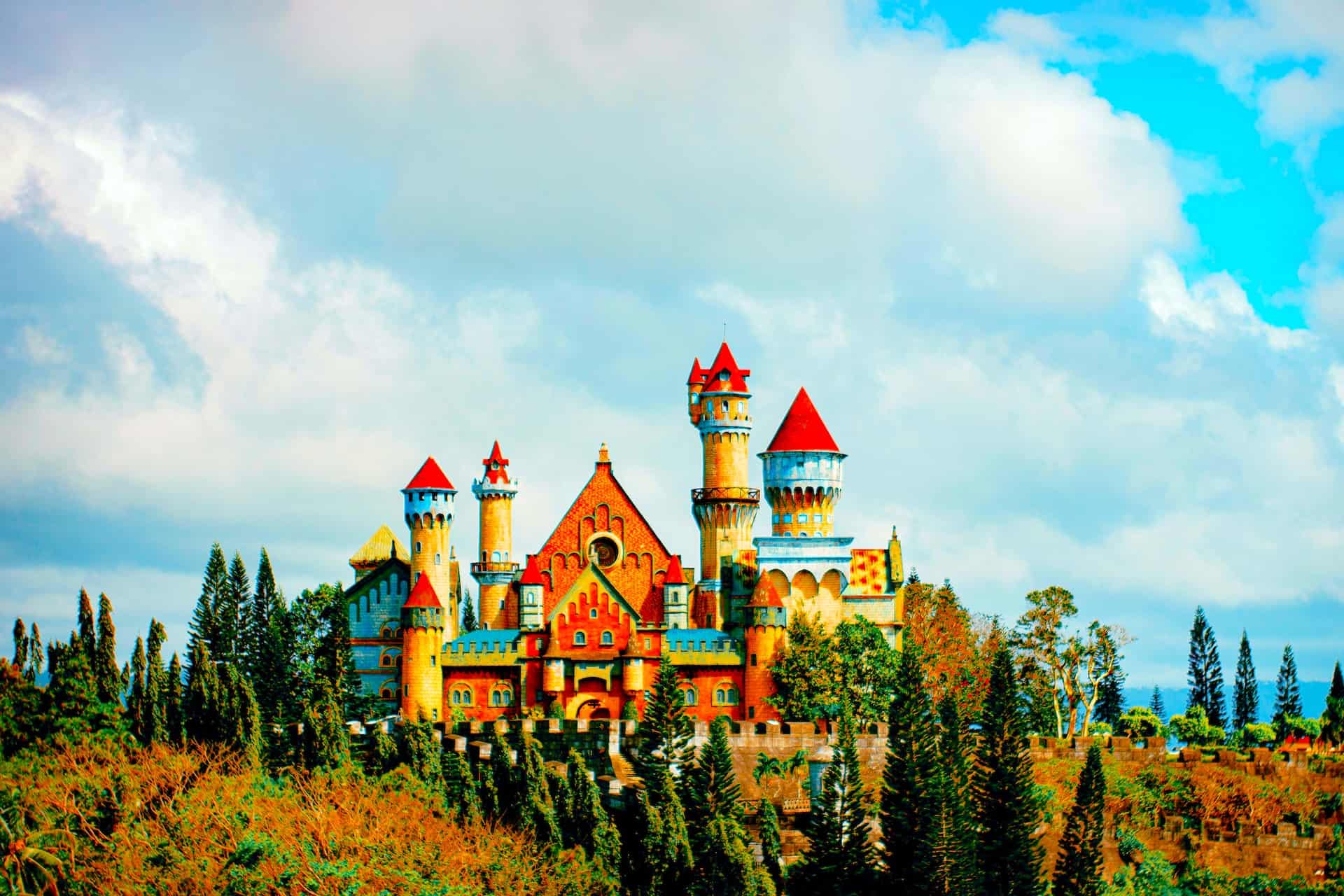
2. Exploring the UNESCO World Heritage Sites of Luzon
Luzon, the largest and most populous island in the Philippines, is a treasure trove of cultural and religious sites and natural wonders, many of which have gained recognition as UNESCO World Heritage Sites. These sites not only add to the allure of Luzon as a premier tourist destination but also showcase the rich cultural heritage and remarkable natural beauty of the Philippines. This section delves into some of these iconic landmarks, each representing a unique aspect of Luzon's historical and ecological significance.
The Banaue Rice Terraces: A Testament to Ingenious Agricultural Practices
Among the most famous Luzon tourist spots are the Banaue Rice Terraces, often described as the "Eighth Wonder of the World." These ancient rice terraces are not merely tourist attractions; they are a symbol of the rich history and ingenuity of the indigenous people of Ifugao. Carved into the mountains over 2,000 years ago, these terraces are a breathtaking and impressive sight, with their intricate patterns and lush greenery that change hues with the seasons.
The Banaue Rice Terraces, with their extensive irrigation system and traditional farming practices, have been maintained for centuries, passing from generation to generation. This enduring agricultural marvel spans an area of over 10,000 square kilometers, a testament to the harmonious relationship between humans and nature. The Batad Rice Terraces, a subset of this majestic landscape, are particularly notable for their amphitheater-like appearance and are a must-visit for anyone exploring the rice terraces of Luzon.
The Historic Town of Vigan: A Glimpse into the Spanish Colonial Era
Another UNESCO World Heritage Site that adds to Luzon's charm as a tourist spot is the historic town of Vigan in Ilocos Sur. This well-preserved town offers a glimpse into the Philippines' Spanish colonial past, with its cobblestone streets, centuries-old houses, and unique architectural fusion of Asian building design and European colonial architecture.
Vigan stands as a living museum of Spanish colonial history, its streets lined with ancestral houses that have withstood the test of time. Visitors to Vigan are transported back to a bygone era as they stroll along Calle Crisologo, the town's most famous thoroughfare, flanked by antique shops, quaint cafés, and horse-drawn carriages. This town is not just a tourist attraction but a cultural heritage site that continues to tell the story of the Philippines' colonial past.
The Puerto Princesa Subterranean River National Park: A Marvel of Nature
Moving from cultural to natural heritage, the Puerto Princesa Subterranean River National Park in Palawan is another jewel in Luzon's crown. This park is home to one of the world's longest navigable underground rivers and is a spectacle of biodiversity and geological formations.
The underground river, with its stunning limestone karst landscapes and complex cave systems, offers an unforgettable experience for tourists. As one navigates through the dark, echoing chambers, illuminated only by the beams of light from their guide's lamp, they encounter a myriad of rock formations, stalactites, and stalagmites, each telling a unique geological story.
The national park surrounding the river is equally impressive, with its rich flora and fauna, including various species of birds, mammals, and reptiles. This UNESCO World Heritage Site is a testament to Luzon's natural wonders and its importance in the global ecological landscape.
The Cordilleras: Preserving the Cultural Landscape of Rice Terraces
The rice terraces in the Cordillera region of Luzon, including those in Banaue and Batad, are not only stunning landscapes but also living examples of a cultural tradition that has endured for millennia. These terraces represent an ancient agricultural system that is deeply intertwined with the cultural identity and social fabric of the indigenous communities.
The terraces are a product of a detailed understanding of the environment, an intricate knowledge of irrigation, and a communal approach to agriculture. They are a testament to the sustainable use of land and water resources, a principle that is as relevant today as it was centuries ago.
As a UNESCO World Heritage Site, the rice terraces of the Cordilleras symbolize the balance between human needs and environmental stewardship. They stand as a reminder of the importance of preserving cultural landscapes, not just as tourist spots in Luzon but as essential components of our global heritage.
The UNESCO World Heritage Sites of Luzon are more than just tourist attractions; they are windows into the soul of the Philippines. They offer a glimpse into the rich history, vibrant culture, and breathtaking natural beauty of Luzon, making it a must-visit destination for travelers from around the world.
From the ancient Banaue Rice Terraces to the historic streets of Vigan and the awe-inspiring Puerto Princesa Subterranean River, each site offers a unique and unforgettable experience. These sites not only enrich our understanding of the Philippines' past but also inspire a sense of wonder and appreciation for the natural and cultural riches of this extraordinary island. As Luzon continues to enchant visitors with religious sites and its myriad attractions, it solidifies its position as a premier tourist spot, a place where history, culture, and nature come together in perfect harmony.
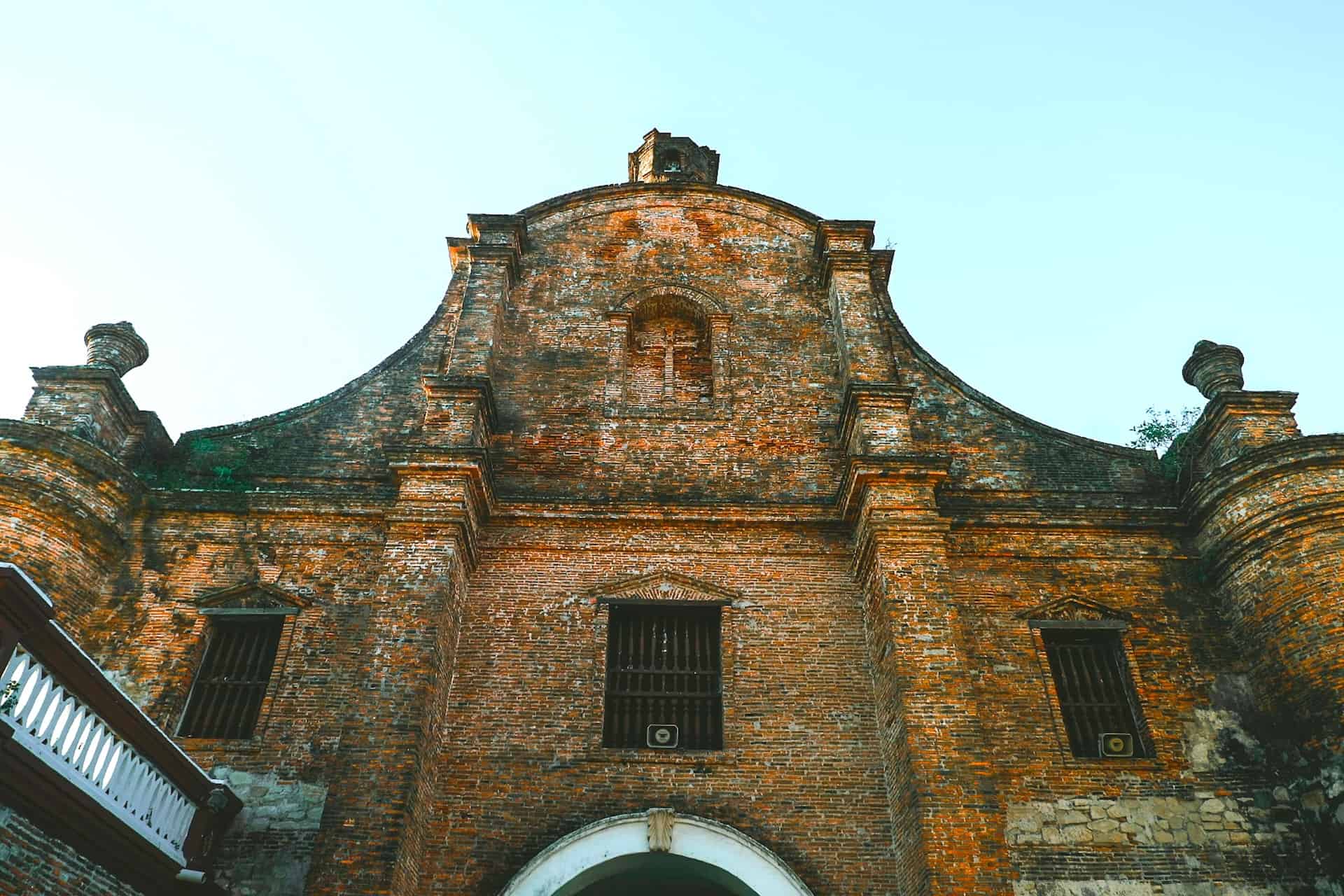
3. The Beauty of Luzon's Natural Landscapes
Luzon, the northernmost island of the Philippine archipelago, is a vibrant tapestry of landscapes that range from volcanic highlands to idyllic beaches. Each of these natural formations not only enhances the beauty of Luzon but also contributes to its status as a popular tourist destination. This section explores the various natural wonders that make Luzon a compelling destination for nature lovers and adventure seekers alike.
The Majestic Mayon Volcano: A Symmetrical Wonder
The Mayon Volcano, located in the mountain province of of Albay, is one of the most iconic landmarks in Luzon and the Philippines. Known for its perfectly symmetrical cone shape, this active volcano is a sight to behold. Standing at 2,463 meters above sea level, Mayon is not just a popular tourist destination but also a symbol of the raw beauty and power of nature.
Visitors to Mayon can engage in various activities such as hiking, ATV riding, or simply enjoying the stunning views from afar. The volcano, with its lush surroundings, provides a perfect backdrop for photography enthusiasts. However, it's not just the volcano itself that attracts tourists; the surrounding landscapes, including the Cagsawa Ruins, offer a glimpse into the volcanic activity's impact on the region's history and culture.
Taal Volcano: A Unique Island Within a Lake
Another geological marvel in Luzon is the Taal Volcano, located in Batangas. This active volcano is unique for its location on an island within Taal Lake, itself situated in a caldera formed by previous eruptions. The stunning crater lake at the taal volcano''s summit is a major draw and popular destination for tourists.
The journey to Taal Volcano is an adventure in itself. Visitors typically travel by boat across Taal Lake to reach the island, followed by a hike or horseback ride to the crater. The panoramic view from the top, overlooking the crater lake and the surrounding landscape, is a breathtaking experience. Taal Volcano's picturesque setting makes it a favorite among photographers and nature enthusiasts.
Luzon's Pristine Beaches: From Sabang to the West Philippine Sea
Luzon's coastline is adorned with some of the most beautiful beaches in the Philippines. These pristine beaches, stretching from the northern part of the island to the shores facing the West Philippine Sea, offer a tranquil escape for beachgoers and water sports enthusiasts.
Sabang Beach in Baler, Aurora, is renowned for its surfing waves and laid-back atmosphere. It's a favorite among surfers, both beginners and professionals, for its consistent swell and long breaks. The beach's golden sands, fresh air and clear waters also make it an ideal spot for swimming and relaxation.
The beaches along the West Philippine Sea, including those in Zambales and La Union, are known for their stunning sunsets and vibrant culture. La Union, in particular, has gained popularity as a surfing capital, attracting surfers from around the world. The province's beaches offer a mix of relaxation and adventure, with opportunities for surfing, beach volleyball, and other water sports.
The Hundred Islands National Park: A Seascape of Wonders
Located in the province of Pangasinan, the Hundred Islands National Park is a unique natural attraction in Luzon. This national park comprises over a hundred islands and islets scattered in the Lingayen Gulf. These islands, characterized by limestone cliffs, sandy beaches, and rich marine life, offer a paradise for nature lovers and adventurers.
Visitors to the Hundred Islands can indulge in various activities such as island hopping, snorkeling, and kayaking. Each island has its own charm, from the secluded beaches of Quezon Island to the pilgrimage site of Pilgrimage Island. The park's rich biodiversity, both above and below the water, makes it a haven for wildlife enthusiasts and marine biologists.
The natural landscapes of Luzon are diverse and captivating, offering a multitude of experiences for tourists. From the awe-inspiring Mayon and Taal volcanoes to the serene beaches and the enchanting Hundred Islands National Park, Luzon's natural wonders are a testament to the island's beauty and ecological significance.
These natural attractions, along with the island's rich cultural heritage, make Luzon a must-visit destination for anyone seeking to explore the beauty of the Philippines. Whether you are an adventure seeker, a nature enthusiast, or simply looking for a peaceful retreat, Luzon's natural landscapes offer something for everyone. As a premier Luzon tourist spot, the island continues to enchant and inspire visitors with its stunning vistas and diverse natural offerings.
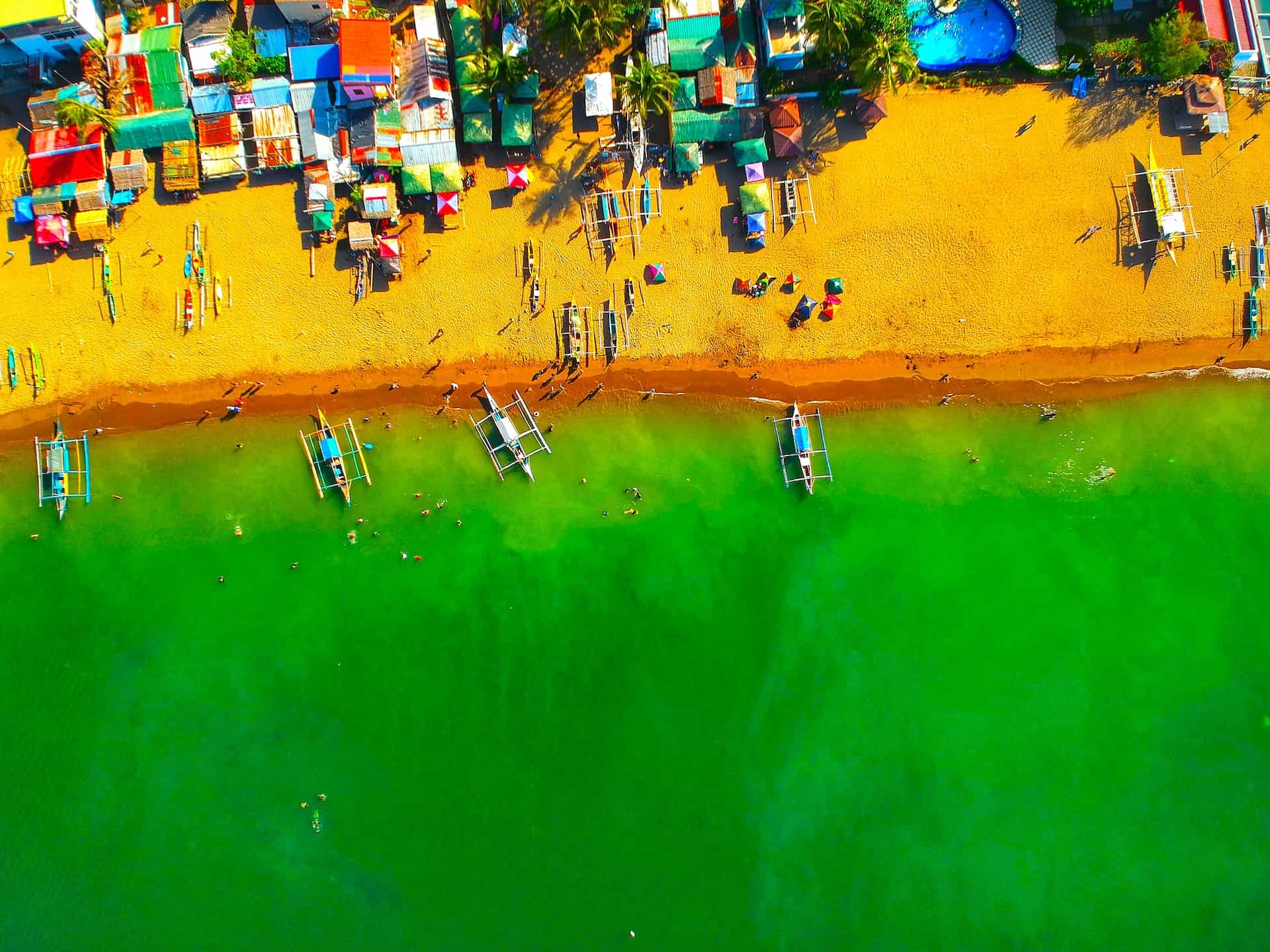
4. Luzon’s Rich Cultural Tapestry
Luzon, the largest island in the Philippine archipelago, is not only a land of stunning natural beauty but also a vibrant melting pot of cultures. This rich cultural heritage, shaped by centuries of history and a variety of influences, makes Luzon a fascinating tourist spot for those interested in the Philippines' diverse traditions and lifestyles. In this section, we delve into the cultural highlights that make Luzon a unique and enriching destination.
The Living Traditions of the Cordillera Region
The Cordillera region in Northern Luzon is a testament to the island's rich cultural heritage. Here, the indigenous communities have preserved their way of life amidst the stunning landscapes of mountains and rice terraces. The Banaue Rice Terraces, a UNESCO World Heritage Site, is not only an agricultural marvel but also a cultural symbol. These terraces, maintained for over 2,000 years, reflect the Ifugaos' deep understanding of their environment and their sustainable farming practices.
In addition to Banaue, the Batad Rice Terraces in the Cordillera region are equally significant. These terraces, with their amphitheater-like structure, are not only a breathtaking Luzon tourist spot but also a living example of the region’s enduring cultural practices. The traditions and rituals associated with rice cultivation in these areas offer a glimpse into the cultural fabric of the indigenous communities.
Vigan: A Window to the Colonial Past
Vigan, located in the province of Ilocos Sur, is another cultural jewel in Luzon. As a UNESCO World Heritage Site, it is one of the best-preserved examples of a planned Spanish colonial town in Asia. Walking through the cobblestone streets of Vigan, visitors are transported back in time to the Spanish colonial era. The town's architecture, a fusion of Spanish and Asian design, is evident in its ancestral houses, churches, and public buildings.
Vigan's Calle Crisologo, in particular, is a popular tourist spot, lined with antique shops, traditional eateries, and calesas (horse-drawn carriages). The city is a living museum, showcasing the rich heritage of Spanish colonial architecture and the enduring influence of Spanish culture in the Philippines.
The Summer Capital: Baguio City
Baguio City, known as the “Summer Capital of the Philippines,” is a unique blend of natural beauty and cultural richness. Located in the mountainous region of Luzon, Baguio offers a respite from the tropical heat with its cool climate and lush pine forests. But beyond its natural allure, Baguio is a center of cultural convergence.
The city is renowned for its vibrant arts scene, with numerous galleries and museums showcasing the works of local artists. The Baguio Arts Festival, an annual event, highlights the city's rich artistic traditions and its role in the contemporary art movement in the Philippines. Furthermore, Baguio's cultural heritage is also reflected in its indigenous crafts, such as weaving and wood carving, which are displayed in local markets and shops.
The Cultural Mosaic of Manila
Manila, the capital city of the Philippines, embodies the cultural diversity of Luzon Tourist Spots. As a melting pot of influences from across the country and around the world, Manila offers a dynamic cultural experience. From the historic Intramuros, the walled city from the Spanish colonial period, to the bustling streets of Binondo, the world's oldest Chinatown, Manila is a place where different cultures and histories intersect.
The city's rich cultural heritage is also evident in its array of museums, galleries, and theaters. The National Museum of the Philippines, for instance, is a treasure trove of Filipino art, history, and culture. Rizal Park, named after the national hero Jose Rizal, is not only a spacious park in the heart of Manila but also a symbol of the Philippines' struggle for independence.
Luzon, with its rich tapestry of cultures, offers a myriad of experiences for those seeking to explore the cultural heritage of the Philippines. From the ancient traditions of the Cordillera region to the colonial charm of Vigan, the artistic vibrancy of Baguio, and the multicultural dynamism of Manila, Luzon is a cultural treasure trove. These cultural experiences, combined with the island's natural beauty, make Luzon a premier tourist spot, captivating the hearts of visitors from around the world. Whether one is interested in history, art, or traditional practices, Luzon provides a deep and enriching journey into the cultural soul of the Philippines.
5. Historical Journeys Through Luzon
Luzon, as the largest island in the Philippines, is not only a beacon of natural beauty and cultural diversity but also a rich repository of history. The island's past, marked by various epochs and influences, has left an indelible mark on its landscape, making it a fascinating and popular destination for history enthusiasts. This section takes us on a journey through Luzon's historical landmarks, each narrating a chapter from the Philippines' storied past.
Intramuros: The Walled City of Manila
Intramuros, known as the "Walled City," is the oldest district and historic core of Manila, the capital city of the Philippines. This historic area was the seat of the Spanish government during the colonial period and is a must-visit Luzon tourist spot for anyone interested in the Philippines' colonial history. The walls of Intramuros, built in the 16th century, were meant to protect the city from foreign invasions and are a testament to the Spanish colonial architecture and military engineering of the time.
Visiting Intramuros is like stepping back in time. The district is home to several historical landmarks, including Fort Santiago, a citadel used as a defensive fortress and a prison during the Spanish and American periods. The San Agustin Church, another notable site within Intramuros, is the oldest stone church in the Philippines and a UNESCO World Heritage Site. Intramuros not only reflects the history of Manila but also tells the broader story of the Philippines during the Spanish colonial era.
Rizal Park: A Tribute to the National Hero
Adjacent to the walled city of Intramuros is Rizal Park, one of the most significant historical sites in Luzon. Named after Dr. José Rizal, the Philippines' national hero, the park is a tribute to his life and works. Rizal Park is not just a spacious park and green oasis in the bustling city of Manila; it's also a symbol of the Filipino people's struggle for independence.
The park's most prominent feature is the Rizal Monument, which contains the hero's remains and stands as a reminder of his sacrifice for the country's freedom. The park also includes other significant markers, such as the Independence Flagpole and the Rizal Execution Site, where Rizal was executed by the Spanish in 1896. For visitors interested in Filipino history, Rizal Park is an essential Luzon tourist spot.
The Historic Towns of Luzon
Luzon is dotted with historic towns that offer a glimpse into different periods of the island's history. Vigan, in Ilocos Sur, is a well-preserved example of a Spanish colonial town, with its ancestral houses and cobblestone streets. Similarly, the town of Taal in Batangas is known for its well-preserved ancestral homes and baroque church, reflecting the Filipino lifestyle during the Spanish era.
These towns are not just tourist spots in Luzon; they are living museums. They provide a unique opportunity to experience the Philippines' rich history and understand the influences that have shaped its culture and identity. Walking through these towns, with their historic buildings and timeless charm, is like traveling through the pages of a history book.
World War II Sites in Luzon
Luzon also played a significant role during World War II, and several sites across the island bear witness to this turbulent period in history. One such site is the Bataan Peninsula, the location of the infamous Bataan Death March. Memorials and markers along the march route commemorate the thousands of Filipino and American soldiers who suffered and died during this tragic event.
Another significant World War II site in Luzon is Corregidor Island, located at the entrance of Manila Bay. This island fortress was a key defense position during the war and is now a historic monument. Visitors to Corregidor can explore the ruins of barracks, gun emplacements, and tunnels, providing a sobering reminder of the war's impact on the Philippines.
The historical sites of Luzon are not only attractions for tourists but also important reminders of the island's past. From the colonial legacy of Intramuros and Vigan to the national significance of Rizal Park and the wartime memories of Bataan and Corregidor, Luzon's history is rich and multifaceted. These sites offer visitors a deeper understanding of the Philippines' history and the events that have shaped its present. As a premier Luzon tourist spot, the island provides a journey through time, offering insights into the struggles, triumphs, and resilience of the Filipino people.
6. Modern Attractions and Urban Explorations in Luzon Tourist Spots
Luzon, while deeply rooted in rich history and cultural diversity, is also a beacon of modernity and urban development. This section explores the contemporary side of Luzon, highlighting how its urban centers blend the historical with the modern, creating a dynamic environment that attracts tourists from around the world. From bustling cityscapes to serene parks, Luzon offers a variety of experiences that cater to the tastes of every urban explorer.
Makati City: A Blend of Modernity and Culture
Makati, often referred to as the financial center of the Philippines, is a prime example of modernity in Luzon. Located within the National Capital Region, Makati is not just a business hub but also a cultural and entertainment center. The city boasts upscale shopping malls, luxury hotels, world-class restaurants, and vibrant nightlife, making it a popular Luzon tourist spot for those who enjoy the hustle and bustle of city life.
Beyond its modern skyscrapers, Makati also offers cultural experiences. The Ayala Museum, located in the heart of Makati, showcases Filipino art, history, and culture. It's an ideal place for visitors interested in understanding the Philippines' rich heritage amidst a modern backdrop. The city's parks, like the Greenbelt Park, provide a green oasis in the middle of the urban landscape, offering a space for relaxation and recreation.
Manila: The Capital City's Rich Tapestry
Manila, the capital city of the Philippines, is a complex tapestry of past and present. It is a city where history meets modernity, where centuries-old churches stand alongside towering skyscrapers. As a Luzon tourist spot, Manila offers a diverse range of experiences, from exploring historic sites to enjoying contemporary amenities.
One can't miss the Rizal Park, a spacious green area in the heart of Manila, dedicated to the national hero Jose Rizal. It's a place of historical significance and a very popular destination and gathering spot for locals and tourists alike. The park is adjacent to the historic walled city of Intramuros, providing a contrast between the old and the new.
The city is also known for its vibrant cultural scene. The Cultural Center of the Philippines in Manila is a hub for the arts, hosting various performances, exhibitions, and cultural events. For shopping enthusiasts, Manila offers numerous shopping malls, and markets, where one can find everything from high-end brands to local handicrafts.
Exploring the Urban Fabric of Luzon Tourist Spots
Luzon's urban centers offer more than just historical landmarks and modern amenities; they are a reflection of the island's dynamic character. The urban fabric of Luzon is a mosaic of diverse influences, a place where different cultures, traditions, and eras converge.
One of the best ways to explore this urban fabric is by visiting the various city markets. Markets like Divisoria in Manila and the Baguio City Market offer a glimpse into the everyday life of the locals. These markets are not only the places to visit for shopping but also cultural experiences, where one can sample local cuisine, find unique souvenirs, and observe the vibrant life of the city.
Luzon's modern attractions and urban explorations provide a comprehensive experience of the island's diversity. From the cosmopolitan charm of Makati and the historical depth of Manila to the vibrant markets and cultural centers, Luzon's urban landscapes are as captivating as its natural and historical sites. As a premier Luzon tourist spot, the island offers a unique blend of experiences, making it an ideal destination for travelers seeking both the excitement of city life and the richness of cultural heritage.
7. Nature and Adventure in Luzon Tourist Spots
Luzon, the northernmost island in the Philippines, offers a myriad of experiences for nature lovers and adventure seekers. Its diverse landscape, ranging from scenic mountains, to seas, provides ample opportunities for various outdoor activities. This section explores the natural wonders and adventure activities that make Luzon a must-visit destination for those looking to immerse themselves in nature and seek thrilling experiences.
Mount Pulag: Trekking to the Clouds
Mount Pulag, the third highest mountain in the Philippines, is a popular destination for trekkers and nature enthusiasts. Located in the Cordillera mountain range, this peak is famous for its "sea of clouds" phenomenon and the stunning views it offers of the various surrounding hills and landscape. Hiking Mount Pulag is an adventure in itself, with trails that cater to both novice and experienced trekkers.
The mountain's diverse ecosystems, ranging from pine forests to mossy landscapes, make it a unique Luzon tourist spot. The trek to the summit is challenging but rewarding, offering breathtaking views and a chance to witness the spectacular sunrise above the clouds. For those interested in the natural beauty and biodiversity of Luzon, Mount Pulag is a must-visit destination.
La Union: Surfing and Beach Adventures
La Union, located on the western coast of Luzon facing the South China Sea, has earned a reputation as the surfing capital of the north. Its beaches, particularly in San Juan, offer excellent conditions for surfing, attracting enthusiasts from around the world. The province's laid-back vibe and beautiful coastline make it a popular Luzon tourist spot for beachgoers and surfers alike.
Apart from surfing, La Union offers other beach activities such as snorkeling, diving, and beach volleyball. The province is also home to various beachside cafes and restaurants where visitors can relax and enjoy the local cuisine while watching the often stunning views and sunsets over the sea.
The Hundred Islands National Park: A Haven for Explorers
The Hundred Islands National Park in Pangasinan is another nature lover's paradise in Luzon. This national park consists of over a hundred islands and islets, each with its unique features. The islands offer a range of activities from island hopping and snorkeling to kayaking and cliff diving.
Visitors to the park can explore the numerous islands, each offering different landscapes and experiences. Some islands have caves and hiking trails, while others boast pristine beaches and rich marine life. The park is not only a great Luzon tourist spot for adventure but also for those interested in biodiversity and natural beauty.
Outdoor Activities Across Luzon
Luzon's diverse landscape offers a plethora of outdoor activities. In the north, the mountainous regions of the Cordillera offer trekking, mountain biking, and camping opportunities. The central plains and valleys are ideal for bird watching and nature photography. The southern part of Luzon, with its volcanic landscapes and lakes, is perfect for both hiking trails and water sports.
For adventure seekers, Luzon offers a range of activities from spelunking in Sagada's caves to whitewater rafting in Kalinga. The island's natural parks and reserves provide excellent venues for eco-tours and wildlife observation.
Luzon, as a premier tourist destination, offers a blend of nature and adventure that caters to a wide range of interests and skill levels. From the majestic heights of Mount Pulag to the surfing waves of La Union and the island adventures in the Hundred Islands National Park, Luzon is a haven for those seeking to connect with nature and experience thrilling outdoor adventures together. Its diverse landscapes and natural beauty make it a top choice for tourists looking for outdoor activities and nature exploration in the Philippines.
8. Special Focus: Unique Attractions in Luzon
Luzon, the largest island in the Philippines, is not just a melting pot of cultures and natural beauty; it also boasts a range of unique attractions that offer special experiences to visitors. This section highlights some of these distinctive destinations, showcasing the variety and uniqueness of Luzon as a tourist spot.
Vayang Rolling Hills, Batanes: A Picturesque Landscape
The Vayang Rolling Hills in Batanes, located at the northernmost tip of populous island of Luzon, present a landscape that is dramatically different from the rest of the island. Known for its rolling green hills and scenic mountains that meet the blue waters of the sea, this area offers some of the most picturesque and stunning views anywhere in the Philippines. The hills are an ideal spot for hiking and photography, providing panoramic views of Batanes’ stunning natural beauty.
Batanes itself is a unique Luzon tourist spot, with its traditional Ivatan houses and a culture that has remained largely untouched by modern influences. The tranquility and beauty of the Vayang Rolling Hills exemplify the serene and pristine nature of this northern part of Luzon.
Binondo Chinatown: A Fusion of Cultures
In the heart of Manila lies Binondo, considered the oldest Chinatown in the world. This bustling district offers a fusion of Filipino and Chinese cultures, evident in its food, architecture, and shops. A visit to Binondo is a sensory experience – from the savory smells wafting from its numerous eateries to the colorful sights of its streets and shops.
Exploring Binondo is like taking a step back in time, with its old buildings and narrow alleys. It's not just a tourist spot but also a place of historical significance, representing the rich heritage of Chinese immigrants in the Philippines. A food tour in Binondo is highly recommended, as it allows visitors to taste a variety of Chinese-Filipino dishes that have become a staple in Filipino cuisine.
The Hanging Coffins of Sagada: A Unique Cultural Practice
In the mountain province of Luzon, Sagada offers a unique cultural experience with its famous hanging coffins. This centuries-old funeral tradition, where coffins are suspended from cliffs, reflects the indigenous people’s beliefs and practices regarding death and afterlife.
Visiting Sagada’s hanging coffins is not only about witnessing a unique cultural practice but also about understanding the traditions and customs of the Igorot people. The town itself, with its cool climate and scenic views, is a popular Luzon tourist spot, offering activities like caving, trekking, and visiting waterfalls.
Luzon, with its array of unique attractions, continues to captivate visitors with its diversity and richness. From the serene Vayang Rolling Hills in Batanes to the vibrant streets of Binondo Chinatown, and the intriguing hanging coffins of Sagada, Luzon offers experiences that are both diverse and enriching. These special destinations highlight the multifaceted nature of Luzon as a tourist spot, making it an ideal destination for those seeking experiences beyond the ordinary.
9. Luzon for Every Traveler
Luzon, with its vast array of attractions, caters to a diverse range of interests, making it a prime destination for various types of travelers. From nature lovers to culture enthusiasts and history buffs, Luzon offers experiences that appeal to everyone. This section explores how Luzon serves as an ideal tourist spot for different visitor profiles.
For Nature Lovers: Breathtaking Landscapes and Outdoor Adventures
Nature enthusiasts will find Luzon a haven of natural beauty. The island's landscapes range from the majestic Mayon Volcano to the serene beaches of La Union and the often stunning views of Batad Rice Terraces. Nature lovers can engage in a multitude of outdoor activities, such as hiking in the Cordillera region, surfing in the waves of La Union, or exploring the diverse ecosystems of the Hundred Islands National Park. Luzon’s natural wonders provide endless opportunities for exploration and adventure.
For Culture Enthusiasts: A Rich Tapestry of Traditions and Arts
Culture enthusiasts will be captivated by Luzon's rich heritage and vibrant arts scene. The historic city of Vigan, with its well-preserved Spanish colonial architecture, offers a glimpse into the Philippines’ colonial past. Baguio City, known as the Summer Capital, is a hub for artists and showcases local crafts and contemporary art. The colorful festivals and indigenous practices of the Cordillera region offer insight into the rich cultural tapestry of Luzon. For those interested in the arts, history, and traditions, Luzon is a treasure trove of cultural experiences.
For History Buffs: A Journey Through Time
History buffs will find Luzon to be a fascinating destination. The walled city of Intramuros in Manila, with its historic fortifications and churches, tells the story of the Philippines’ colonial era. The various World War II sites, including the Bataan Peninsula and Corregidor Island, offer a sobering look at the island's wartime history. Luzon's historical landmarks provide a deep understanding of the events that have shaped the nation.
For Adventure Seekers: Thrills and Excitement
Adventure seekers will not be disappointed in Luzon. The island's varied terrain offers everything from trekking and mountain biking in rugged landscapes to diving and water sports in its coastal areas. The challenges of climbing Mount Pulag, the thrill of surfing in Baler, and the excitement of spelunking in Sagada are just a few of the outdoor adventures that await in Luzon.
Luzon, as a premier tourist destination, offers something for every type of traveler. Its diverse range of attractions ensures that whether one is seeking tranquility in nature, a deep dive into cultural heritage, a lesson in history, or an adrenaline-fueled adventure, Luzon has it all. This versatility not only makes Luzon a significant Luzon tourist spot but also a microcosm of the Philippines' overall appeal as a destination rich in experiences and discoveries.
10. Plan Your Trip: Practical Information and Tips for Visiting Luzon
Luzon, as a premier tourist destination in the Philippines, offers a multitude of experiences. Whether you're a first-time visitor or a returning traveler, planning your trip effectively can make your experience more enjoyable and hassle-free. This section provides essential information and tips for tourists planning to explore the various Luzon tourist spots.
Understanding the Best Times to Visit
Luzon's climate is tropical, with a distinct dry season from November to April and a wet season from May to October. The best time to visit most Luzon tourist spots is during the northern part of the dry season when the weather is more predictable, and outdoor activities are more enjoyable. However, for those looking for places to visit to experience Luzon's vibrant festivals, it's important to check the dates as many festivals occur during the southern part of the wet season.
Transportation: Getting Around Luzon
Luzon is well-connected by a network of roads, railways, and air routes. The most common way to travel around Luzon is by bus, jeepney, or tricycle for short distances, and rented cars or taxis for convenience and comfort. For long distances, domestic flights are available to major destinations within Luzon. Understanding the local transportation system and planning your travel routes can help in navigating Luzon efficiently.
Accommodation: From Luxury Resorts to Budget Stays
Luzon offers a range of accommodation options to suit all budgets. In major cities like Manila and Baguio, there are luxury hotels and resorts. For those looking for a more authentic experience, smaller towns and rural areas offer guesthouses and homestays. It's advisable to book accommodation in advance, especially during peak tourist seasons and festivals.
Experiencing Local Cuisine
One of the highlights of visiting Luzon is the chance to try its diverse and flavorful cuisine. Each region in Luzon has its specialties, from the hearty stews of the north to the spicy dishes of Bicol. Street food is also a must-try, offering a taste of local flavors at affordable prices. Remember to exercise caution with street food, especially if you have a sensitive stomach.
Cultural Etiquette and Local Customs
Respecting local customs and cultural etiquette is essential when visiting Luzon. This includes dressing modestly when visiting religious sites, greeting locals politely, and being mindful of local traditions and practices. Understanding and respecting the local culture enhances the travel experience and helps in building meaningful interactions with locals.
Safety and Health Precautions
While Luzon is generally a safe destination, it's important for tourists to take standard safety precautions. This includes safeguarding personal belongings, being aware of your surroundings, and avoiding risky areas, especially at night. Health-wise, it's advisable to have travel insurance, stay hydrated, and protect yourself from mosquito-borne diseases by using repellents and wearing appropriate clothing.
Language and Communication
The primary language in Luzon is Filipino, with English widely spoken, especially in urban areas and tourist spots. Learning a few basic phrases in Filipino can be helpful and is appreciated by locals. Most signs and menus are in English, making communication and navigation easier for English-speaking tourists.
Visiting Luzon can be an amazing experience, filled with diverse attractions, rich culture, and breathtaking natural beauty. By understanding the best times and places to visit, navigating the transportation system, sampling the local cuisine, respecting cultural practices, and taking necessary safety and health precautions, tourists can ensure a memorable and enjoyable visit to the various Luzon tourist spots.
11. Conclusion: Embracing the Essence of Luzon as a Premier Tourist Spot
The journey through Luzon, the largest island in the Philippines, reveals a land of unparalleled diversity and beauty. From its majestic natural landscapes to its rich cultural heritage, historic landmarks, and vibrant modern cities, Luzon encapsulates the essence of a premier tourist destination. This concluding section reflects on the diverse experiences Luzon offers and why it continues to captivate the hearts of visitors from around the world.
Luzon: A Symphony of Natural and Cultural Wonders
Luzon is a symphony of natural wonders. The awe-inspiring Mayon Volcano, the serene beauty of the Batad Rice Terraces, and the pristine beaches stretching from the northern shores to the sandy beaches facing the West Philippine Sea, each contribute to the island's natural allure. The Hundred Islands National Park and the unique landscapes of the Cordillera region offer unforgettable experiences for nature lovers and adventure seekers.
Culturally, Luzon is a treasure trove. The historic city of Vigan, the vibrant arts scene of Baguio City, and the dynamic capital city of Manila showcase the island's rich cultural tapestry. The enduring traditions of the Cordillera region and the fusion of cultures in Manila's Binondo Chinatown are testaments to Luzon's diverse heritage.
Historical Significance and Modern Charms
Luzon's historical significance is evident in its landmarks. The historic Intramuros in Manila, the iconic Rizal Park, and the poignant World War II sites reflect the Philippines' tumultuous past and the resilience of its people. These historical landmarks provide insight into the events that have shaped the nation's identity.
The modern attractions of Luzon, from the bustling streets of Makati City to the colorful markets and vibrant nightlife, demonstrate the island's contemporary appeal. Luzon's urban centers, with their blend of tradition and modernity, offer a unique experience of Filipino life in the 21st century.
A Destination for Every Traveler
Luzon's diversity makes it an ideal destination for every type of traveler. Nature enthusiasts, culture buffs, history seekers, and adventure lovers can all find something to cherish in Luzon. The island offers a variety of experiences, from tranquil retreats in natural settings to exhilarating adventures and deep cultural immersions.
Final Thoughts: Why Luzon Stands Out
Luzon stands out as a tourist spot for its ability to offer a comprehensive and varied experience. Its landscapes, rich in natural beauty and cultural heritage, are matched by the warmth and hospitality of its people. Luzon is not just a destination but a journey through a land that embodies the heart and soul of the Philippines.
Visiting Luzon is more than a travel experience; it's an exploration of a vibrant and resilient and vibrant culture itself, a discovery of stunning natural beauty, and an encounter with a rich and storied past. It is a destination that leaves visitors with lasting memories and a deeper understanding of the Philippines' unique charm and diversity.
Sources: https://en.wikipedia.org/wiki/Luzon
